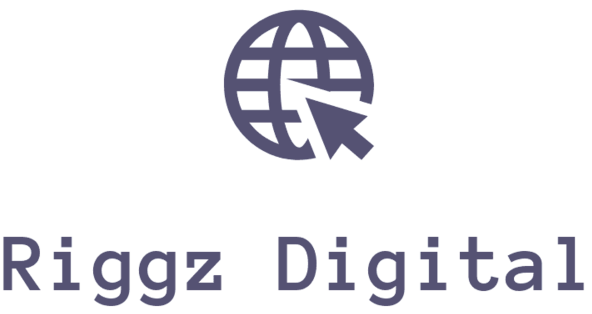Getting your educational website noticed online isn’t just about publishing great content—it’s about making sure the right people find it. Whether you’re running a school website, managing a university blog, or promoting online courses, SEO (Search Engine Optimization) is your best bet for attracting students, parents, and educators who are actively searching for what you offer.
This beginner’s guide to SEO for educational websites breaks down the must-know tactics to help your content rank higher on Google. From optimizing course pages to improving mobile usability, you’ll learn how to boost visibility without drowning in jargon. It’s time to make your educational site work smarter—not harder—for every click.
Table of Contents
Why SEO Matters for Schools and Colleges
You can have the best teachers, top-notch facilities, and awesome programs—but if people can’t find you online, it doesn’t count. This is where SEO for educational websites plays a huge role. When your website ranks on Google, it becomes your 24/7 digital admissions officer—no salary, no holidays.
Think about it. When students or parents search for “best high school in Nairobi” or “online MBA programs,” who do they see first? Those with strong SEO win. Those without? Buried on page 10 where no one scrolls.
🎯 Why Search Engines Love Smart School Sites
Search engines want to give users the best results. That means well-structured, fast, and relevant websites. Yours can be one of them. Schools and colleges that follow SEO best practices make it easier for Google (and students) to find their content.
Here’s why it matters:
- 🧭 Improves discoverability – Your courses show up when people search.
- 🏆 Builds trust and authority – Top-ranking sites look more credible.
- 📱 Enhances user experience – Mobile-friendly and fast-loading pages keep visitors engaged.
- 💬 Drives qualified traffic – You attract people genuinely interested in your programs.
And the best part? SEO doesn’t cost you per click. It’s organic. Free real estate on the most visited page of the internet.
📊 Real Benefits for Real Schools
| SEO Advantage | Impact on Your Institution |
| Higher rankings | More student applications and website visits |
| Local SEO optimization | Increased walk-in visits and community visibility |
| Quality backlinks | Boosted domain authority and reputation |
| Better content structure | Lower bounce rates and longer session times |
So yes, SEO for educational websites isn’t just a nice-to-have—it’s a game-changer. Imagine having prospective students land on your page before they even think of calling competitors.
The internet is your school’s front door. Make sure it’s polished, easy to find, and inviting. Give your educational content the stage it deserves.
Top On-Page SEO Techniques for Academic Sites
You wouldn’t hand students a messy syllabus, right? Your website deserves the same care. A clean, well-structured page is easier for both users and search engines to understand. For SEO for educational websites, on-page optimization starts with your content layout and HTML tags.
Use clear headings to break up content and guide readers through each topic. Search engines love that stuff. Also, make sure each page has a unique title tag and meta description—it’s like giving your web page a name and elevator pitch.
Here’s what you should focus on:
- 🏷️ Title Tags – Keep them under 60 characters and include relevant keywords.
- 📄 Meta Descriptions – Aim for 150–160 characters and highlight the page benefit.
- 🔖 Headings (H1-H3) – Use only one H1 tag per page and organize other headings logically.
🎯 Target the Right Keywords (Without Sounding Robotic)
Keyword stuffing is so 2008. Today, it’s all about using the right phrases in a natural way. For example, instead of repeating SEO for educational websites a hundred times, sprinkle it into content where it makes sense—like page titles, headings, and intro paragraphs.
Tools like Google Keyword Planner or Ubersuggest can help you find what students, parents, or faculty are searching for. Then, build content around those terms.
Here’s a quick cheat sheet:
| Page Type | Example Keywords |
| Course Pages | “Online business degree in Kenya” |
| About Us | “Top private schools in Nairobi” |
| Blog Articles | “How to choose the best primary school” |
🚀 Add Value with Internal Links and Media
Internal links are like campus signposts—they guide visitors to explore more content. Use them to connect related courses, blog posts, or admissions info. This keeps people on your site longer, which boosts your rankings.
And don’t forget images, videos, and infographics. They break up long text and add visual interest, especially for younger audiences or international students.
Try this:
- 🔗 Link to relevant pages like “Apply Now” or “Campus Life.”
- 🎥 Add a short video tour of your school.
- 📸 Use optimized images with descriptive alt text.
Making small changes to your site structure and content can create a big impact over time. That’s the beauty of good on-page SEO.
Creating Student-Centered Content That Ranks
Great content speaks to students, not at them. To nail SEO for educational websites, your content should answer student questions before they even ask. Think beyond school brochures—focus on the real stuff students care about.
Instead of just saying “We offer science courses,” try, “What can you do with a science degree from our school?” That tiny shift makes your content more helpful, relatable, and search-friendly.
Start by asking yourself:
- 🤔 What do students Google before choosing a course?
- 🧳 What do international students want to know before applying?
- 📅 What happens in student life that deserves a blog post?
✍️ Make Content Fun, Useful, and Easy to Digest
Students scan, scroll, and swipe. They don’t read giant walls of text, so keep things fun, snappy, and clear. Use headings, bullet points, and real-life examples to keep them engaged from start to finish.
Here are some content ideas that rank and resonate:
- 📚 “How to Choose the Right Course for Your Career”
- 📍 “Top 10 Things Every First-Year Student Should Know”
- 🛏️ “A Day in the Life of a Campus Resident”
- 🧳 “5 Things International Students Must Do Before Arrival”
- 💡 “Why [Your School] Makes You Industry-Ready”
📊 SEO-Optimized Content Still Needs Heart
You’re not writing for robots—you’re writing for real people who happen to use Google a lot. So yes, use keywords naturally. But make it sound like you’re talking to a friend, not writing a term paper.
Check out this example table:
| Boring Content | Student-Centered Alternative |
| “Admissions requirements are listed…” | “Here’s what you’ll need before applying 📝” |
| “Facilities include labs and libraries” | “Explore our epic science labs and chill zones 📖” |
| “We offer career counseling” | “We help you plan your dream career 🎯” |
When you put students at the center of your content strategy, your SEO improves naturally. They’re searching, you’re answering—Google loves that. Everyone wins.
Mobile Optimization for Learning Platforms
Students live on their phones. Whether they’re researching courses, checking deadlines, or applying online, it’s all happening on mobile. If your learning platform looks weird on a smartphone, you’re losing attention—and trust—fast.
Mobile optimization isn’t optional anymore. It’s a huge ranking factor for Google and an even bigger deal for user experience. So if your site isn’t easy to navigate on a phone, your SEO for educational websites takes a serious hit.
Here’s why mobile-first matters:
- 🚀 Google uses mobile-first indexing
- 📉 A slow mobile site increases bounce rates
- 📱 Students expect lightning-fast, mobile-friendly design
🛠️ Fix the Mobile Experience, Fix Your Rankings
Making your platform mobile-friendly doesn’t mean shrinking everything down. It means designing with mobile in mind from the start. You want your site to load quickly, scroll smoothly, and have buttons you can actually tap without zooming.
Here’s a quick mobile optimization checklist:
- 📏 Use responsive design that fits all screen sizes
- ⚡ Compress images to speed up load time
- 🧠 Make menus simple and easy to tap
- 🎯 Keep forms short and mobile-friendly
- 🧭 Add a search bar that works well on phones
Let’s compare mobile-friendly vs. not-so-friendly:
| Feature | Mobile-Optimized Version | Problematic Version |
| Navigation menu | Hamburger menu, simple dropdowns | Tiny links that require zooming |
| Text size | Easy-to-read fonts at 16px+ | Small, unreadable text |
| Images | Fast-loading, compressed visuals | Huge files that slow down load speed |
| Call-to-action buttons | Large, centered, easy to tap | Buttons hidden or too small |
🎓 A Better Mobile Site Helps Students Learn
Think of mobile optimization like organizing your classroom—it makes everything easier to find, access, and use. Students shouldn’t struggle to register, download resources, or explore your programs just because they’re using a phone.
The good news? Many mobile fixes are quick wins. And the payoff—more engagement, better SEO, happier students—is totally worth it.
You’re building a platform for the next generation. Make sure it works on the devices they actually use.
Using Google Analytics to Track SEO Progress
You wouldn’t teach a class without checking if your students are learning, right? The same logic applies to your website. With Google Analytics, you can see what’s working, what’s flopping, and where to focus next.
If you’re doing SEO for educational websites, tracking progress is the only way to know if your efforts are paying off. Google Analytics turns confusing data into useful insights you can act on.
Here’s what you can discover:
- 📈 Which pages get the most visitors?
- ⏳ How long are students staying on your site?
- 🚪 Where do they drop off and why?
📊 Key Metrics Every School Website Should Watch
Don’t worry—you don’t need a PhD in data to use Google Analytics. Start by focusing on a few key numbers that matter most to your goals.
Here’s a breakdown:
| Metric | Why It Matters |
| Organic traffic | Shows how many visitors found you via search |
| Bounce rate | Tells you if visitors leave after one click |
| Page views | Helps identify popular and underperforming content |
| Average session time | Reveals how engaging your content really is |
| Conversion rate | Measures actions like form submissions |
The goal is to spot trends and adjust your SEO strategy accordingly.
🎯 Turn Data Into Better SEO Moves
Once you’ve got the data, don’t just stare at it—use it! If students keep bouncing off your admissions page, maybe it needs better headlines or faster load speeds. If your blog on “Study Tips for High Schoolers” is crushing it, create more like that.
Use Google Analytics to:
- 📍 Identify high-performing pages and replicate their format
- 🧭 Find traffic sources to see where students are coming from
- 📉 Spot pages with high exit rates and improve them
- 🔍 Discover keywords students are using to find your site
🚀 Keep Tweaking, Keep Growing
SEO isn’t a one-and-done job. It’s an ongoing process of testing, measuring, and improving. With Google Analytics by your side, you’re not just guessing—you’re making smart, data-driven decisions.
You’ll be surprised how much better your content performs once you start tracking what students actually want.
Wrapping things up
Getting started with SEO for educational websites doesn’t need to feel like exam prep. You just need the right tools and mindset. Focus on helping students, making your content easy to find, and keeping your site mobile-friendly and fast.
You’ll rank better, attract more visitors, and give your school the online spotlight it deserves. Keep learning, keep testing, and keep improving—Google loves that.

